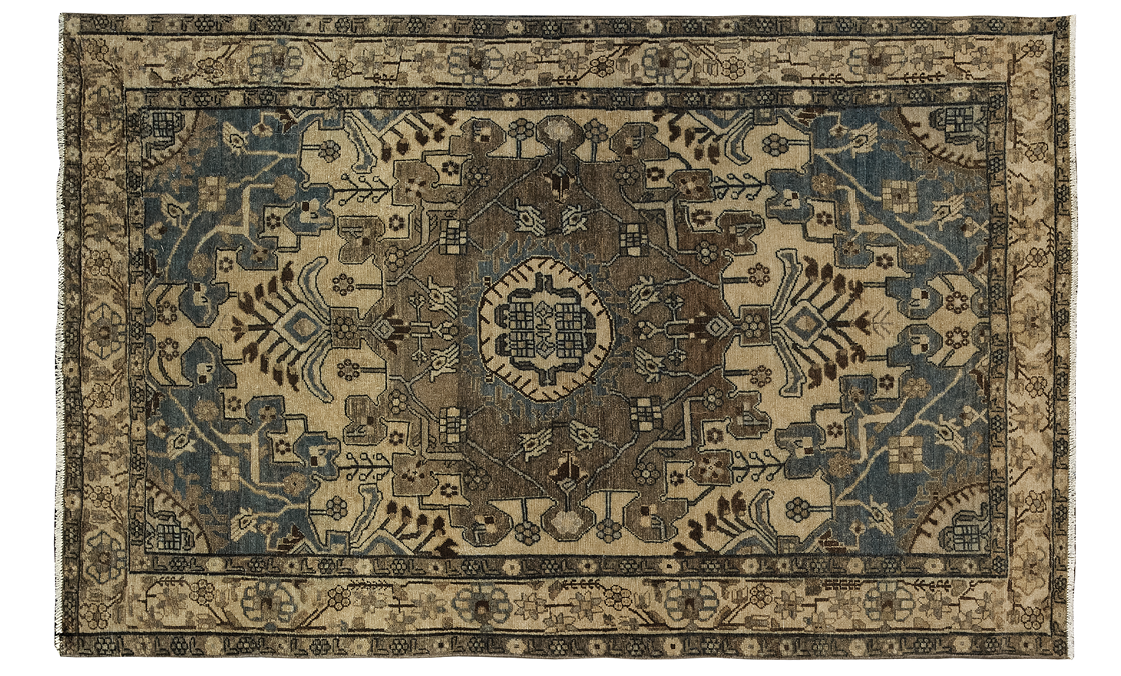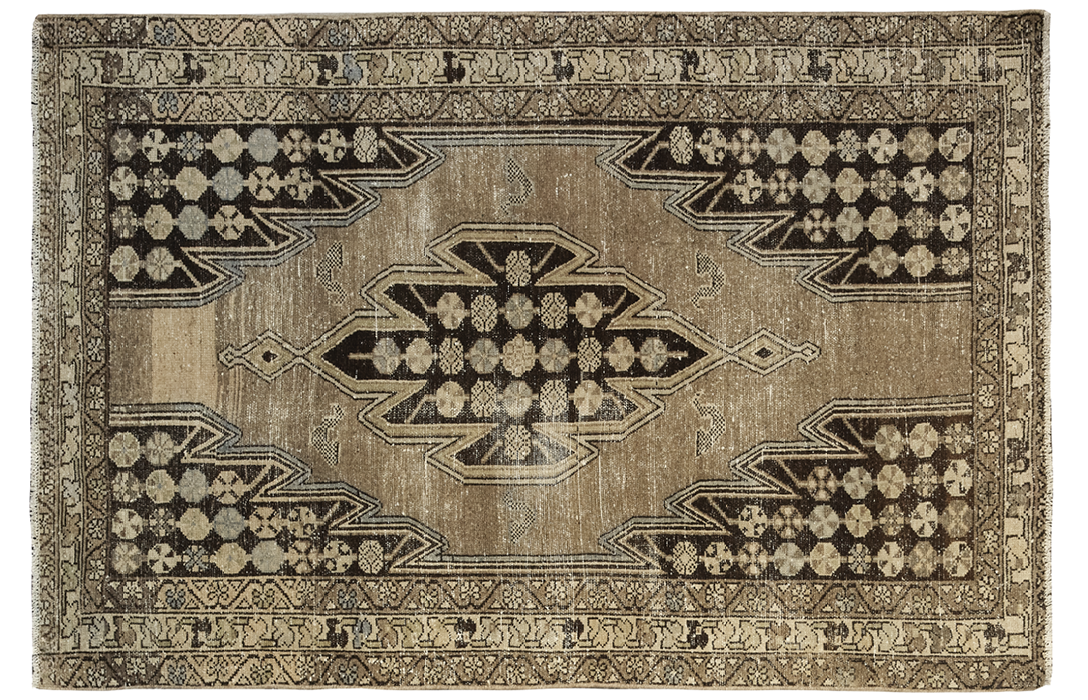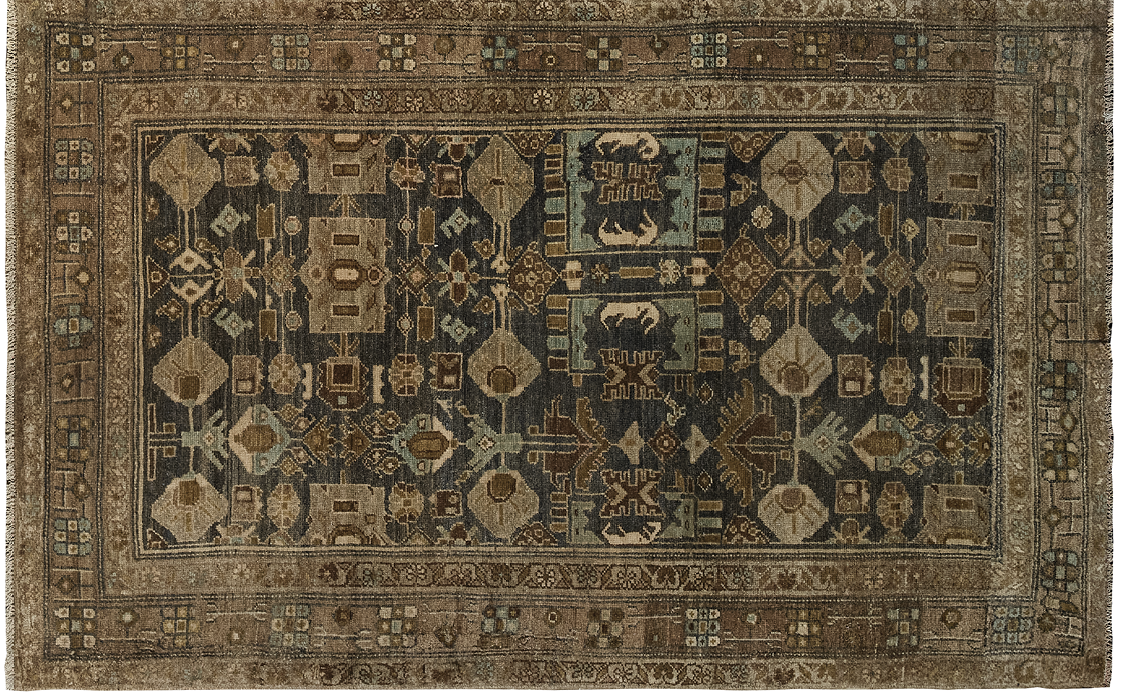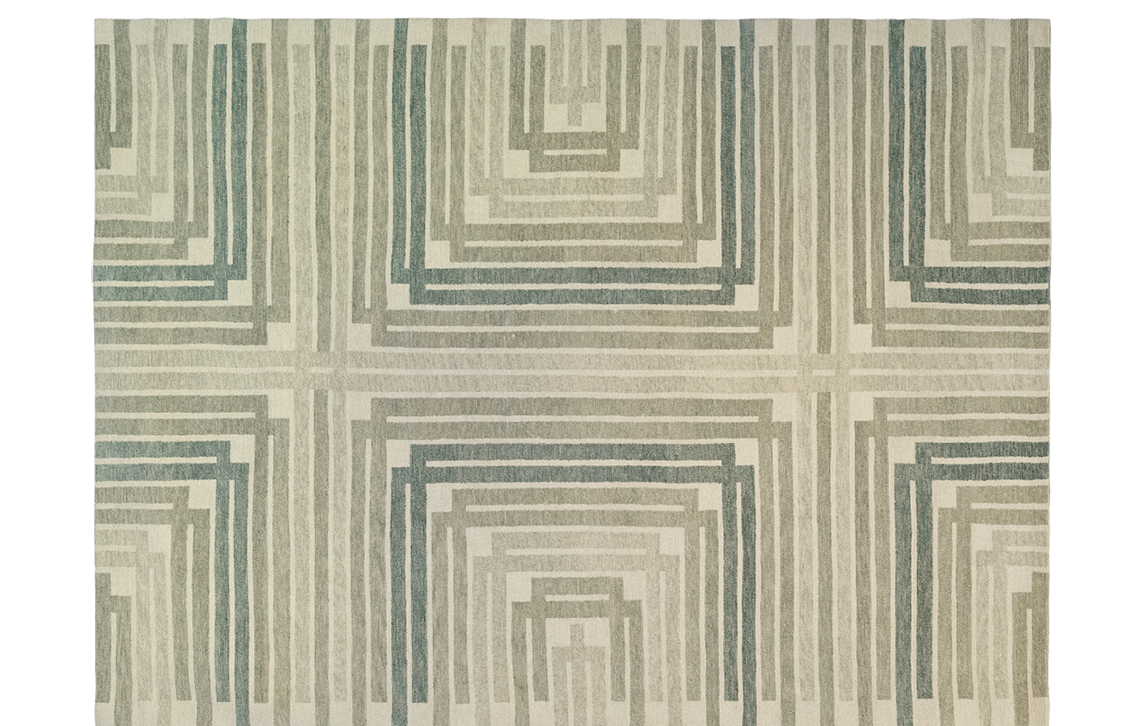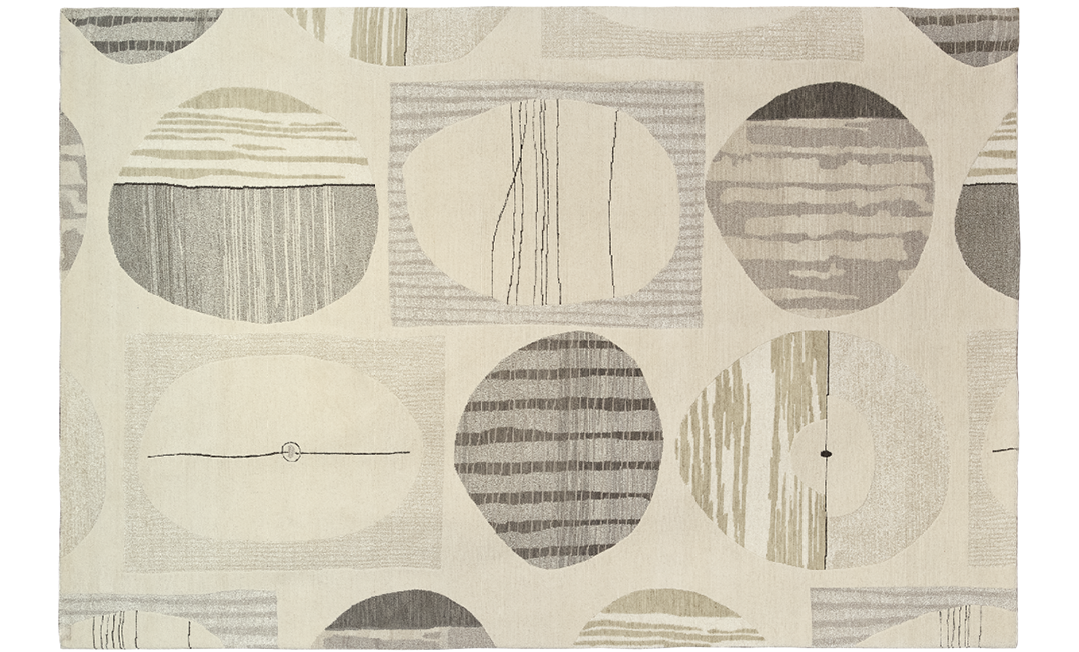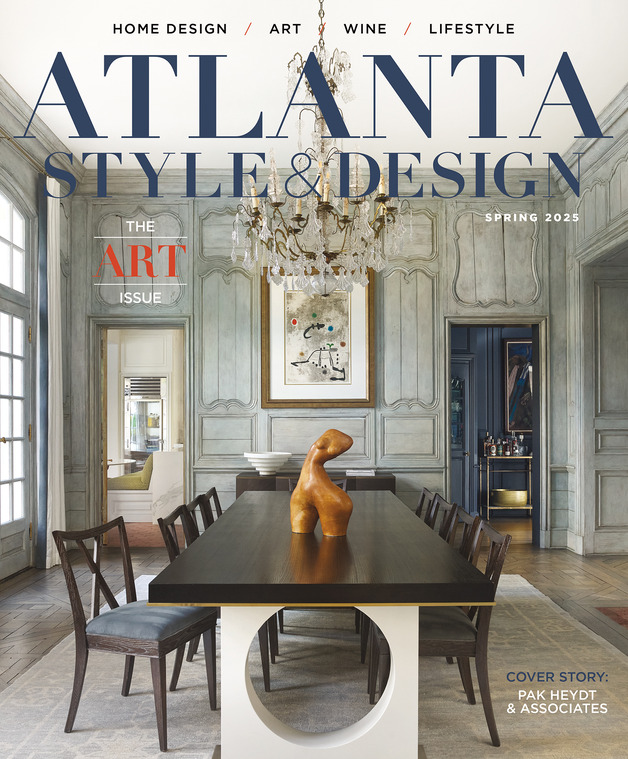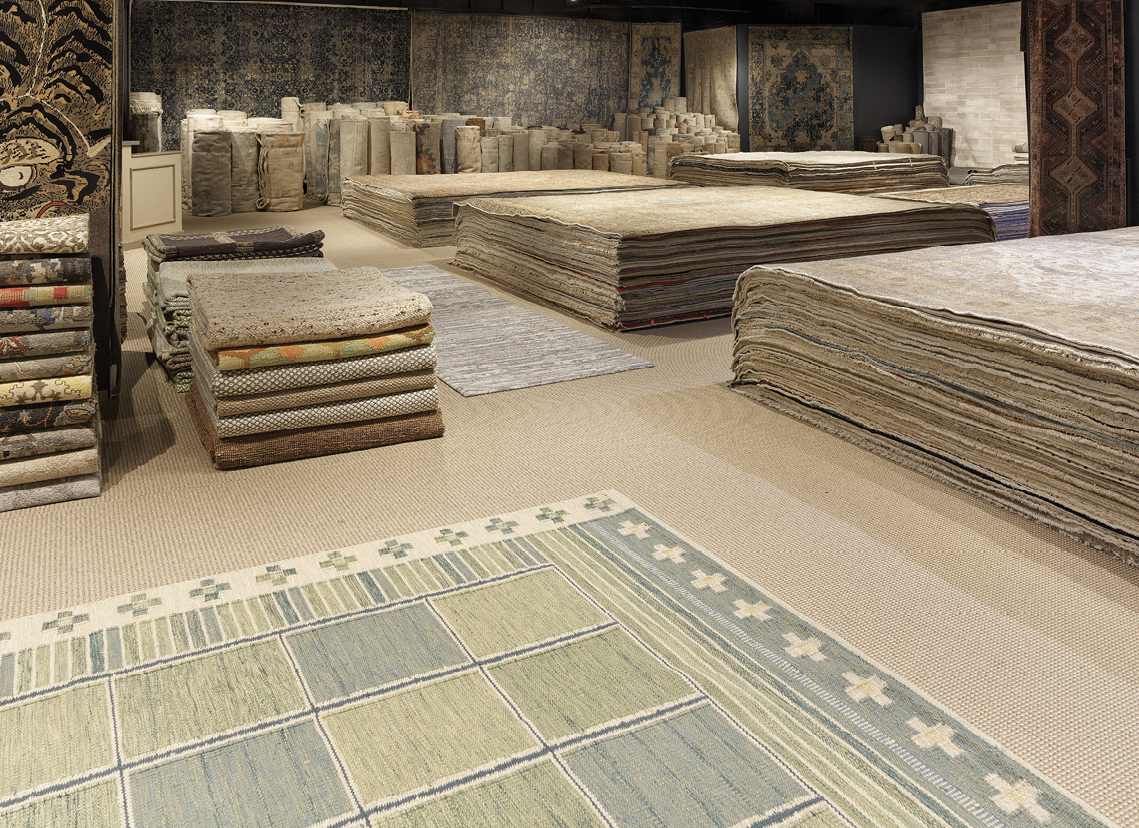
Rugs are woven culture, embodying the aesthetic of a people, and the finest are created by hand. Arguably, no other form of furnishing quite rivals the international flavor, the history or the heritage of rugs.
At Designer Carpets, owners Norge Taboada and Robert Hampton are not only steeped in these distinguishing characteristics, but they are also world travelers who bring the best of the best to their domestic and international clients.
“We travel to Nepal, India, Turkey and elsewhere, making relationships with importers and manufacturers, visiting weaving centers and dye and yarn houses in remote areas,” says Hampton. “We are always searching the world for new things, not content solely with what we have in the showroom.”
Founded in 1975 by Dave Patterson, Designer Carpets currently is celebrating its 40th year. Long housed in the Atlanta Decorative Arts Center (ADAC), widely regarded as the design center in the Southeast, the business emerged from Patterson’s background in broadloom carpets.
Although Taboada and Hampton purchased the company three years ago this coming May, they had been intimately associated with the firm for years.
“We’ve both worked here for 30 years,” says Hampton, a Chicago transplant. “A big part of our story is us having started at this company as entry-level employees, learning the business from the ground up, progressing through sales, then as buyers, as head buyers, then eventually taking over. We’ve established a lot of great relationships within the design community in Atlanta over the years and have worked hard taking it to the next level.”
The two men developed their expertise under the mentorship of Patterson’s son, Glenn, and daughter, Laura, a brother-sister team who knew they were leaving the company in good hands.
As a leading supplier to the design community, Designer Carpets is open to the trade, which is to say wholesaling to designers and architects. Primarily, it supplies rugs for high-end residential projects and commercial projects in the hospitality industry and country club area.
With a full-time staff of eight, Designer Carpets carries handcrafted Tibetan carpets, (Turkish) Oushaks, antique reproductions, flat weaves and classic Soumaks.
“We offer true antique rugs of all kinds,” says Taboada, who is originally from Sancti Spiritus, Cuba. “It’s a big part of our business and our story.”
The major focus is on custom rugs, from which consumers initially tend to shy away. Everyone seems to have a horror story about them, say the owners. But over years of developing trust in their professional relationships both with clients and rug partners overseas, they pride themselves on making it a simple and fearless process, as well as straightforward. Designer Carpets looks at where the rug is going and what type of space it will occupy in an active residential household, second home or commercial space, then suggests some different qualities that would perform best in that space.
“We know color is king in the design community,” says Hampton. “We have a bank of 2,400 colors that each of our overseas partners has as well. Once the basic colors have been selected, we move on to design. In this part of the process, we choose multiple designs and start plugging in the selected colors to scale with computer-aided design. When we have narrowed it down and picked a design with color placement, it is time for a strike-off—a test piece or example for client approval. The size of the strike-off depends on scale and pattern. We would have it back in the States in three to four weeks for approval. Then it’s production time. Normal rug production would be between 12 and 16 weeks, depending on quality and size. Our partners have given us the opportunity to make some amazing rugs, and there are many more to come.”
The inventory is as extensive as it is varied. Although area rugs predominate, the company also provides domestic and imported broadloom wall-to-wall carpets in a wide variety of materials: wool, silk, viscose, nylon, jute, sisal, abacá, linen and polypropylene. All carpets are available in custom-sized area rugs, as well.
The goal is to fill custom orders that create the perfect size and color of floor covering for any space.
“Being here every day when architects and designers come in, we get a very clear idea of what people are looking for,” says Taboada. “They bring in their fabrics and finishes and wall coverings so we can see the colors and designs they are looking for, and we try to tailor our inventory to match what they need.”
“In a nutshell, we are direct importers of fine Oriental rugs from all over the world,” Hampton adds. “As far as the carpet side of the business is concerned, we market the finest broadloom manufacturers from throughout the world as well. We produce rugs based on buyer specifications. They are the professionals in that regard.”
Although the company does offer items of more contemporary design, its inventory tends toward the traditional. Hampton says he and Taboada take pride in being able to accommodate almost any request. “Between Norge and me, it’s rare for us to encounter anything unusual or unfamiliar,” he says. “We can source anything in the world from our partners. There is really very little that is out of the ordinary. Basically, there is nothing we can’t do.”
For the uninitiated, the terms “rug” and “carpet” are one and the same in the vocabulary of the trade. After all, the fabled magic carpet of Arabian Nights fame was very much a small rug. “People in the Middle East and through most of the world use the terms rug and carpet interchangeably for handmade wares, though this does not apply to what those in the United States call wall-to-wall carpeting,” explains Taboada.
Over the years, the business has grown to feature what people in this country call “area”’ rugs. The size of a rug depends not only on the size of the floor space it’s going to inhabit but also on how the room itself is styled, with furniture placement playing a pivotal role. A carefully placed area rug can even split an open-plan room into sections.
Area rugs also have the capacity to tie various pieces of furniture together harmoniously, bringing a room together even if the furnishings are of different styles.
“The right rug,” Hampton says, “works with everything.” *
Bill Thompson covers the arts, film, books and design.
